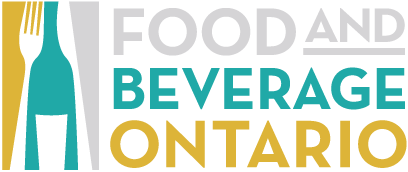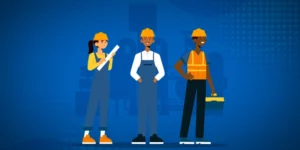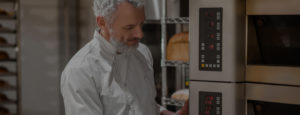CFIA expectations for the prevention of and response to suspected and confirmed cases of COVID-19 by operators
Effective date:
[April 14, 2020].
Introduction
The Canadian Food Inspection Agency (CFIA) recognizes that COVID-19 prevention and response activities maintained by operators at their locations are critical elements for employee health and safety.
In order to protect the health and safety of its employees, the CFIA expects that each operator abide by the advice and guidance provided by the Public Health Agency of Canada (PHAC), as well as by local public health authorities in addressing the COVID-19 outbreak. OperatorsFootnote 1 must be prepared to respond to queries from the CFIA. The absence of appropriate measures by the operator to protect CFIA employees may impact the delivery of CFIA inspection services.
Communication and a collaborative approach are key to addressing COVID-19 public health risks.
Preventive plans can be used as a communication tool between the operator and the CFIA. As such, plans should include measures taken by operators that are:
tailored to the specific needs and realities of individual operations.
documented.
thoroughly implemented.
Prevention and mitigation measures and response plans
Operators are encouraged to take strong preventative measures to help mitigate the risks to individuals within their premises. They should also document these measures. It is recognized that certain public health measures may not be possible in some operations. Documentation should recognize this and outline the preventative measures that are in place.
For example, where the public health guidance for physical distancing is 2 metres, but cannot easily be accommodated, it may be possible to:
adjust on-site inspection practices and frequencies,
increase the distance between CFIA employees and location staff, or
adjust traffic patterns through the premises to avoid "people-congested" areas.
Operators are also encouraged to have plans that respond to both suspected and confirmed cases of COVID-19. Relevant definitions from PHAC are provided in the Annex. Operators are encouraged to consult with local public health authorities for applicable guidance.
Mitigation and response planning documents should:
describe the measures to prevent or minimize the occurrence or exposure of COVID-19.
Examples include:
sanitation and biosecurity practices/schedules/locations
approach taken regarding physical distancing
self/company health assessment protocols/practices and description of screening methods in place or any supporting procedural documents
policy for your staff to report their, or their colleagues, illness. This should include notification to the CFIA of any COVID-19 finding which may have involved close contact with CFIA employees, as defined by PHAC
describe the specific response/action plans that will be implemented when there is a finding of a COVID-19 positive employee.
The Annex provides additional examples of potential concerns and practical mitigating measures.
These mitigation and response plans are critical and will be expected by the CFIA. In advance of performing inspection activities, the CFIA may reach out to an operator to inquire about:
COVID-19 measures that are in place on site, and
assess that a location does not represent a health and safety risk to CFIA employees.
Operators must be prepared to respond to queries from the CFIA. The absence of appropriate measures by the operator may impact the delivery of CFIA inspection activities.
Procedures
Operators' COVID-19 response plans should be in accordance with the local health authority and provincial guidance, and include:
When receiving information of a COVID-19 positive employee or employee being tested as a suspected case request the assistance of local public health authorities in determining the risks to other employees and to CFIA employees who may have been in close contact with the confirmed or suspect case.
Where it has been determined that the duties of the confirmed positive or suspect employee may have resulted in close contact, as defined by PHAC and the local public health authorities, with CFIA employees, the CFIA expects to be notified.
If the local public health authority is not able to provide assistance in determining the risks to other employees, the operator should seek the support of appropriate expertise (for example, Occupational Health and Safety (OHS) professionals or provincial/industry working groups) to develop and implement the appropriate remediation plans, including ensuring proper action is taken with individuals potentially exposed to the COVID-19-positive, or suspected, employee.
The CFIA will ask the operator to provide information and documents to support an appropriate assessment of the risk to the CFIA employees. The CFIA will consider the protocols/procedures in place by individual operators, plus the particularities of the operator's COVID-19 positive employee, such as:
work site location,
what kind of work,
common areas with CFIA employees,
date of confirmed diagnosis or onset of symptoms,
time spent with CFIA employee,
etc.
The CFIA will also take into account the advice from local public health authorities. If the CFIA can't get this advice in a timely manner, the CFIA will need to consider available information, to the best of its abilities, and weigh the potential risk to its workforce, if the inspection activity is to proceed versus the impact on an operator if the CFIA decides the risk to its employees is too great to proceed with the inspection.
Where local public health authorities have determined that a site investigation is required or the operator and the CFIA agree that such a site investigation is necessary, the operator will request the participation of the CFIA in the investigation. The purpose will be to appropriately determine the health impacts to the CFIA staff. The CFIA will identify a team which may include:
experienced inspection staff,
Health and Safety Committee or representative member, and if necessary to provide technical advice,
area OSH Coordinator/Advisor, and
appropriate CFIA management
Investigation outcomes
Local public health authorities will make decisions regarding exposure to operator and the CFIA employees, their need for self-quarantine and/or referral to health services for testing.
Based on the information gathered above, some CFIA employees may be deemed to have had negligible risk and can be cleared for further work.
An assessment of the operator's plans for additional mitigation measures for COVID-19 will be jointly evaluated. Results from the CFIA review of written information from the operator will be used by both the CFIA and local public health authorities in the determination of appropriate steps to ensure the safety of CFIA employees.
Further information
Enquiries concerning this content may be directed to your local CFIA office. Questions may also be sent by email.
This page will continue to be updated as new requirements and information are identified.
Annex
Key concern: Employees do not have the ability to maintain the physical distance recommended by PHAC or the local health authorities in specific areas of the work site.
Mitigation: Changes to employee behavior regarding moving within the location, communicating between employees and access control to specific areas where the CFIA inspection work occurs.
Examples of mitigation measures include:
Adjust operations to eliminate the need for "close contact communication".
Adjust on-site processes to increase the distance between CFIA employees and operator employees, coupled with adjusting travel patterns through the location to avoid people-congested areas.
Discourage non-essential communication between operator employees and CFIA employees during inspection activities to reduce the occurrences of close contact and to adopt alternate communication practices like phone and email for essential communication.
Key concern: That not all employees are following public health advice or operator protocols regarding general hygiene to mitigate the risk of COVID-19 transmission.
Mitigation: Employees are instructed by the operator to immediately raise concerns to their supervisor for discussion and resolution.
Definitions
Definitions from PHAC:
Isolation requirements
You must isolate for at least 14 days if you have:
been diagnosed with COVID-19, or are waiting for laboratory test results for COVID-19.
symptoms of COVID-19, even if mild.
been in contact with a suspected, probable or confirmed case of COVID-19.
been advised to do so by your public health authority.
returned from travel outside Canada and have symptoms of COVID-19 (mandatory).
Close contact
A close contact is defined as a person who provided care for the patient, including healthcare workers, family members or other caregivers, or who had other similar close physical contact or who lived with or otherwise had close prolonged contact with a probable or confirmed case while the case was ill.
Exposure criteria
In the 14 days before onset of illness, a person who:
traveled to an affected area, or
had close contact with a confirmed or probable case of COVID-19, or
had close contact with a person with acute respiratory illness who has been to an affected area within 14 days prior to their illness onset, or
had laboratory exposure to biological material (for example, primary clinical specimens, virus culture isolates) known to contain COVID-19.
Suspect (Person under investigation)
A person with fever and/or cough who meets the exposure criteria and for whom a laboratory test for COVID-19 has been or is expected to be requested.
Note: The surveillance mechanisms and systems for identifying a person under investigation may vary by jurisdiction according to perceived risk, resources, supporting structures and other context.
Probable
A person:
with fever (over 38 degrees Celsius) and/or new onset of (or exacerbation of chronic) cough
and
who meets the COVID-19 exposure criteria
and
in whom laboratory diagnosis of COVID-19 is:
inconclusive,
negative (if specimen quality or timing is suspect), or
positive but not confirmed by the National Microbiology Laboratory (NML) or a provincial public health laboratory by nucleic acid amplification tests.
Confirmed
A person whose laboratory confirmation of infection with the virus that causes COVID-19 is performed at a reference laboratory (NML or a provincial public health laboratory). This confirmation consists of positive nucleic acid amplification tests on at least two specific genome targets or a single positive target with nucleic acid sequencing.
Positive laboratory tests at a non-reference laboratory require additional testing at a reference laboratory for confirmation.
Note: laboratory tests are evolving for this emerging pathogen, and laboratory testing recommendations will change accordingly as new assays are developed and validated.
Operators are encouraged to consult the guidance available from their local public health authority.
Footnote
Footnote 1
Any regulated party or business to which the CFIA may be required to physically interact for the purposes of carrying out its mandate, including, but not limited to:
food processing establishment where a CFIA inspector conducts inspection activities, or
farm where a CFIA representative carries out an animal disease investigation




